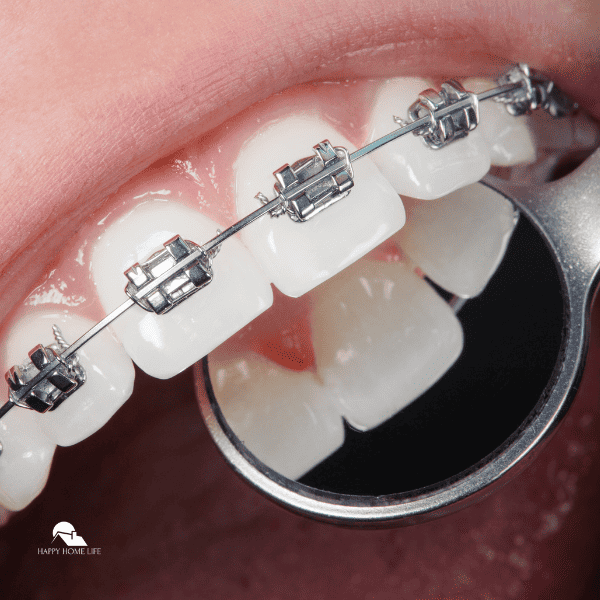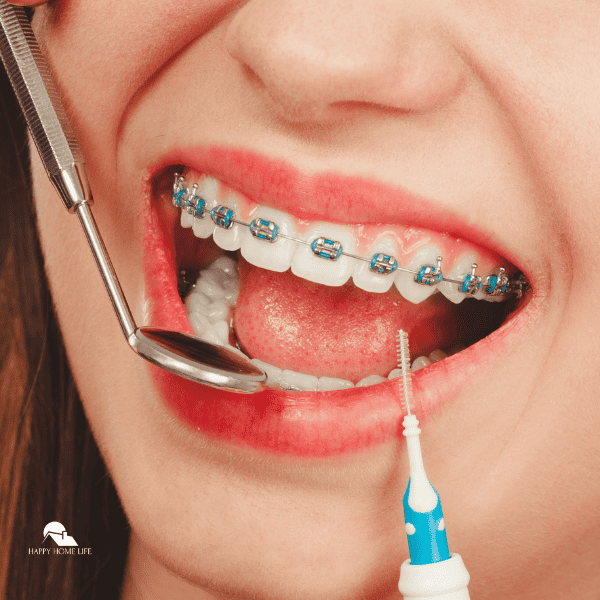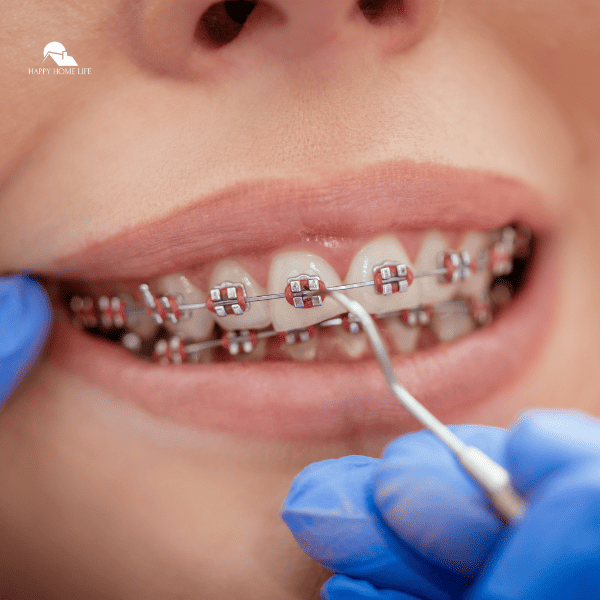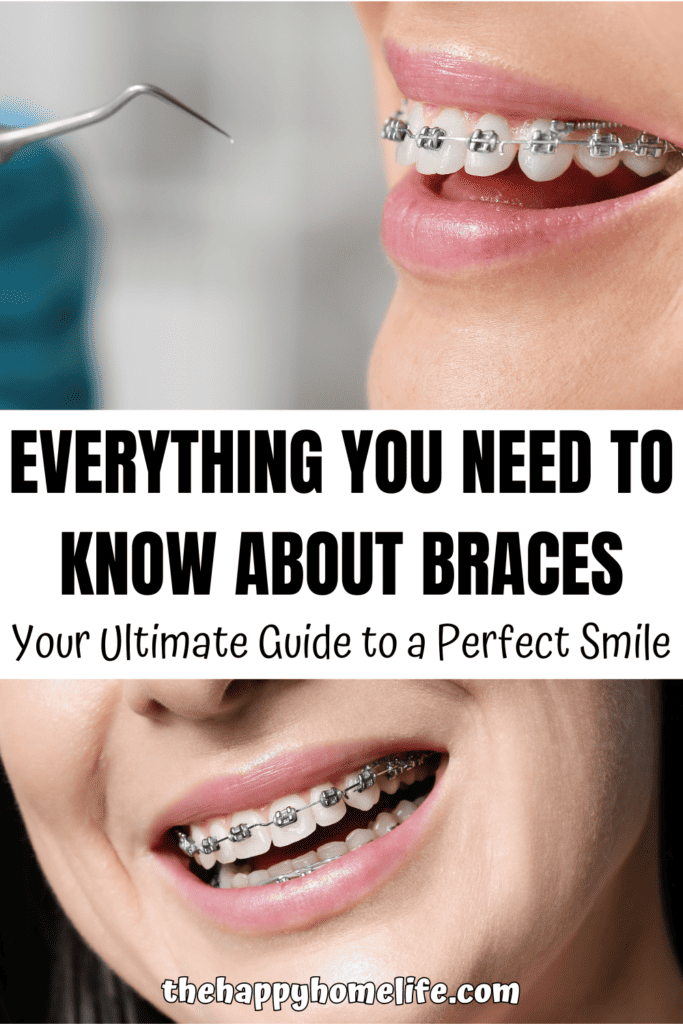Braces have been successfully realigning teeth for over a century, continuously evolving with advancements in dental technology to become more effective and comfortable for patients of all ages.
With this long history and constant innovation, it’s natural for individuals considering braces to have numerous questions and concerns about the process, costs, and outcomes.
However, there’s no need to worry. This article will walk you through everything you need to know about wearing braces.

Why is Orthodontic Treatment Important?
Orthodontic treatment is not just about achieving a beautiful smile; it also contributes to better oral hygiene and overall health. Misaligned teeth can lead to various oral health problems such as difficulty in cleaning teeth, increased risk of tooth decay and gum disease, jaw pain, and even speech impediments. By undergoing orthodontic treatment, individuals can improve their oral hygiene, reduce the risk of oral health issues, and enhance their self-confidence.
Different Types of Braces
There are several types of braces available today, catering to different needs, preferences, and aesthetic concerns. Here’s a brief overview of the most common ones:
- Metal Braces: Traditional metal braces are the most recognizable type. They consist of high-grade stainless steel brackets and wires that are attached to the front of the teeth. Metal braces are highly effective at correcting a wide range of orthodontic issues and are usually the most cost-effective option.
- Ceramic Braces: Ceramic braces function similarly to metal braces but use tooth-colored or clear ceramic brackets to blend in more naturally with the teeth. They are less visible than metal braces, making them a popular choice for adults and older teenagers who prioritize aesthetics during treatment.
- Lingual Braces: Lingual braces are attached to the back of the teeth, making them invisible from the front. They can correct the same range of issues as traditional braces but are more challenging to clean and can be more uncomfortable initially due to contact with the tongue.
- Invisalign (Clear Aligners): Invisalign uses a series of custom-made, clear plastic aligners to gradually move teeth into position. The aligners are virtually invisible, removable for eating and cleaning, and offer a more aesthetic and less intrusive alternative to traditional braces. However, they may not be suitable for more complex orthodontic issues.
For personalized guidance in choosing the right type of braces for you, consult with Kumra Orthodontics, the leading orthodontist in Fredericksburg, VA. Their experienced team is dedicated to providing tailored solutions that align with your individual needs and aspirations for a perfect smile.

Daily Care Tips for Maintaining Braces
Maintaining good oral hygiene and following a braces care routine are essential for the success of orthodontic treatment. Here are some daily care tips to help individuals effectively maintain their braces and achieve optimal oral health.
Brushing and Flossing Techniques
Proper brushing and flossing are crucial when wearing braces. Use a soft-bristled toothbrush and fluoride toothpaste to gently brush the teeth, braces, and gum line. Flossing should be done with the help of floss threaders or orthodontic floss to remove food particles and plaque from between the teeth and braces.
Foods to Avoid
Certain foods can damage braces or increase the risk of oral health issues. Hard, sticky, or chewy foods should be avoided as they can bend wires, loosen brackets, or get stuck in the braces. It is advisable to steer clear of popcorn, nuts, chewing gum, caramel, and hard candies.
Using Orthodontic Tools and Accessories
Orthodontic tools such as interdental brushes, proxabrushes, and water flossers can be used to clean hard-to-reach areas around the braces. Additionally, using orthodontic wax can help alleviate discomfort caused by braces rubbing against the inner cheeks or lips.
Managing Discomfort and Emergencies with Braces
Dealing with discomfort and knowing how to handle common orthodontic emergencies are essential aspects of braces maintenance. Here are some tips for managing discomfort and addressing emergencies related to wearing braces.
Dealing with Discomfort
It is common to experience some discomfort or soreness after getting braces or following adjustments. Over-the-counter pain relievers, orthodontic wax, and rinsing with a saltwater solution can help alleviate discomfort. Eating soft foods and applying a cold compress to the outside of the mouth can also provide relief.
Handling Common Orthodontic Emergencies
Orthodontic emergencies such as broken brackets, protruding wires, or loose bands may occur. In such situations, it is important to contact your orthodontist immediately for guidance. In the meantime, using orthodontic wax to cover protruding wires or applying dental wax to reattach loose brackets can help prevent further discomfort or damage.
Regular Orthodontic Check-Ups and Adjustments
Attending regular orthodontic check-ups and adjustments is vital for ensuring the progress of the treatment and addressing any issues that may arise. Orthodontists can make necessary adjustments to the braces, monitor oral health, and provide guidance on maintaining good oral hygiene habits.

Achieving Optimal Oral Health with Braces
In addition to daily care and managing discomfort, achieving optimal oral health with braces involves prioritizing good oral hygiene, maintaining a balanced diet, and incorporating healthy habits.
Importance of Oral Hygiene
Good oral hygiene habits such as brushing after every meal, flossing at least once a day, and using an antimicrobial mouthwash are essential for preventing plaque buildup, tooth decay, and gum disease. Following the guidelines recommended by the American Dental Association (ADA) for good oral hygiene can significantly impact oral health during orthodontic treatment.
Maintaining a Balanced Diet
A balanced diet rich in essential nutrients such as calcium, phosphorus, and vitamin C is crucial for maintaining strong teeth and healthy gums. Avoiding sugary and acidic foods and beverages can help prevent enamel erosion and tooth decay, especially when wearing braces.
Incorporating Good Habits for Oral Health
Incorporating good habits such as drinking plenty of water, avoiding smoking, and wearing a mouthguard during physical activities can contribute to better oral health and protect the braces from damage.
Conclusion
iIt’s clear that the orthodontic journey towards achieving a radiant smile is both transformational and rewarding. Armed with the right information and support from experienced professionals, you can make informed decisions about your orthodontic care. Each step taken is a move towards not only enhancing your appearance but also boosting your oral health for years to come.
What vision do you have for your smile, and how do you see it shaping your future?







